The gentrification of Washington DC: how my city changed its colours

Author Uzodinma Iweala was born in Washington DC, and says the city is in my blood, my diction and my style. But how has the city he loves, and where his mother and father worked, changed since his birth?
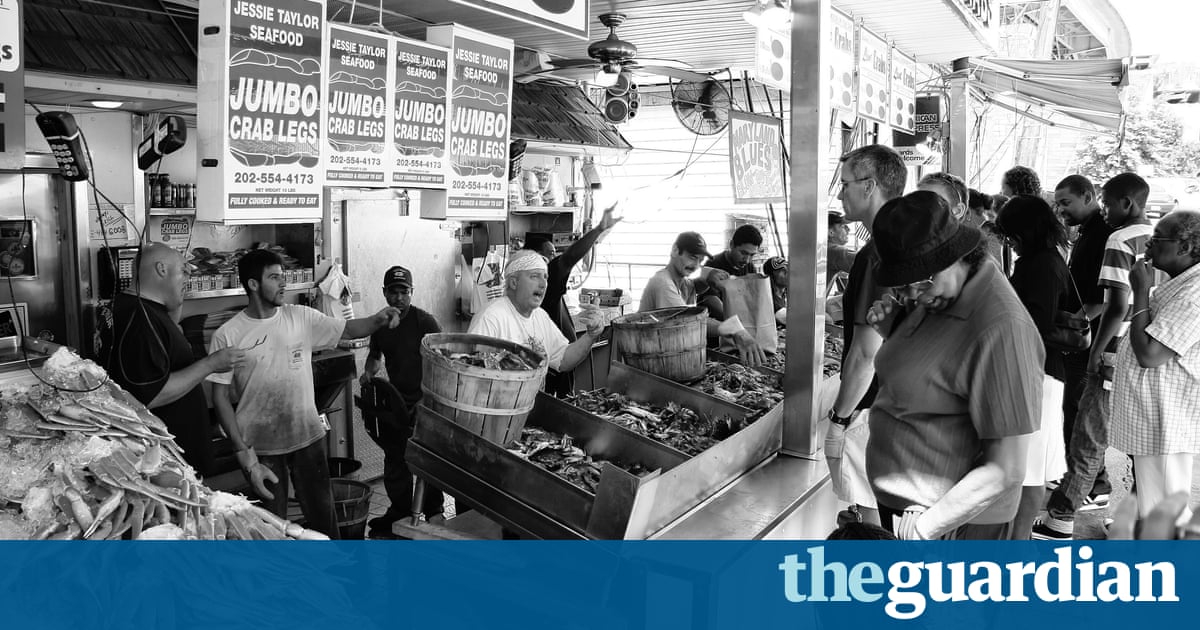
The last time I returned to Washington DC, I arrived as I usually do, by train into Union Station. It was the end of March, the day before Easter Sunday, and the platforms teemed with travellers coming into town to see the citys cherry blossoms, gifted to the city more than a hundred years ago by the mayor of Tokyo.
The colonnade of delicately blossomed trees along the Tidal Basin walkway to the Jefferson Memorial is a historical and aesthetic delight for visitors; but for me, as a child, they were a harbinger of Washingtons aggressive hay fever season. When I was in high school, I would do my best to run speed workouts on the track while inhaling my own snot and wheezing through pollen-aggravated wind pipes. As an adult, I discovered Claritin and my whole world changed.
When I return by train, weather permitting, I often walk the mile-and-a-half from Union Station to the White House along Constitution Avenue before catching an Uber home, just to reacquaint myself with some of the structures and institutions that make my city so unique.
Here are the Smithsonian Museum buildings, many of which I entered as a child on school field trips. This is the majestic, David Adjaye-designed African American History Museum, so long overdue. There is the Washington monument in marble of two shades because the civil war disrupted its construction. Here is the White House, where the most powerful man in the world resides for a few months longer, a black man like me. This is the Federal Reserve, which for conspiracy theorists is the ultimate arbiter of all our fates. And here are the paths one million people marched along to hear Dr Martin Luther King preach for an end to Americas love affair with structured hate.
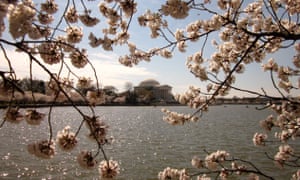
Washington DC is not a subtle city. Unlike the capitals of other once-great powers which, many hundreds of years old, present a more seamless meshing of monumental memory and daily life, DC is constructed to shout Here I am! I am powerful! to the world.
But walking among the tourists earlier this year, I was filled with both smugness and sadness. Unlike these interlopers, I was born on this soil, within the 70 sq miles divided into four large quadrants that constitute our nations capital. I consider this city and these public spaces my own, yet I am cowed by the vastness of its outsized influence.
I rep Washington DC hard despite not having really lived here since I graduated from high school, and despite spending the past few years working in Lagos. DC is in my blood, my diction, my sensibility and style. I am, though, in love with a city that cannot fully love me back.
****
My DC starts in 1982 at the Washington Hospital Center. I was born in a city that was nearly 70% black. They called it Chocolate City: birthplace of Duke Ellington and Marvin Gaye, home of Chuck Brown and the citys idiosyncratic Go-Go music.
Ronald Reagan was not quite two years into his presidency, and Marion Barry was still a mayor celebrated for having made the jump from civil rights activist to consummate city politician. Pennsylvania Avenue in front of the White House was still an active thoroughfare, not yet closed to traffic for fear of assassination attempts or terrorist attacks.
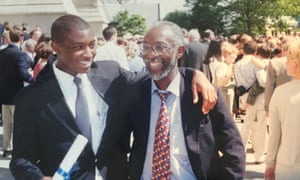
There was also trouble. Drug usage and crime rates had steadily escalated through the 1970s, creating a vicious cycle of white flight and depressed municipal revenue, which in turn led to decreased services, increased poverty, worsening crime and further white flight to the Maryland and Virginia suburbs.
The DC I entered was a divided city, populated by a minority white elite in the upper north-west section of the city that buzzed around the corridors of power; and a majority mixture of black wealthy, middle and working class with the poorest residents confined to pockets of debilitating poverty, and largely ignored in the citys outward projection of itself.
Yet this great divide did not manifest in the way you might have noticed in other cities.
For as long as I can remember, the majority of Washington DCs police force has been black. For that reason, perhaps, the city has been spared some of the worst excesses of police brutality, exacerbated by racial misunderstanding. But young as we were, my siblings and I still felt the racial tensions in assumptions our friends and their parents made about where we should live (read: not in the affluent suburb of Potomac); in the joking remarks white classmates made about majority black sections of the city (automatically the ghetto) to which they had most likely never been; in the skin colour of the people riding the metro buses compared to those on the subway or driving their cars; and in white peoples presumption of incompetence on the part of the mostly black city officials.
Even more troubling to me was the fact that growing up white in Northwest DC or the surrounding suburbs meant one could get away with not noticing these complex racial dynamics. Im pretty certain that for many of my classmates at the elite private school I attended, my black classmates and I formed the majority of their substantive interactions with people of colour.
But Washington DC has always been a divided city, most obviously between the officialdom of the United States federal government headquartered here, and the informal lives of the people who inhabit the city and its surrounding suburbs. It is a city fractured by its infatuation with official remembrance (as seen in its monuments and museums), and its seeming indifference to the personal memories of the permanent residents whose lives have truly shaped it.
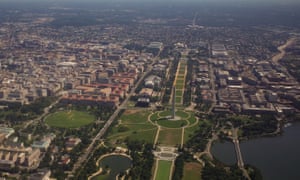
***
People often speak of DC as if it has always existed in its pure state; as if brought to us by virgin birth. In fact, its territory was carved from two slave-holding states. Within its original borders were two slave trading ports: the first in what is now the trendy north-west neighbourhood of Georgetown, and the second in the modern city of Alexandria, Virginia.
Upon its founding, nearly a quarter of DCs population was black, and just under 10% of that population was free. The citys grand avenues and whitewashed structures were built by black slaves and freemen for the powerful white men who met inside to pass laws and uphold social norms that severely compromised the fundamental rights of black Americans.
Slavery is the reason DC looks like a half-eaten sandwich on a map. Slave holders in Virginia feared a growing abolitionist block in the United States congress might eventually push to outlaw slavery in the federal capital, so they petitioned to have the portion of the capital donated by Virginia returned to the state in 1846.
Four years later, congress outlawed the slave trade in the nations capital. Soon after, during the nations catastrophic civil war, the 13th amendment abolished slavery in all states, triggering an influx of ex-slaves from the south who sought safety and opportunity in this relatively progressive enclave.
DC has since seen the rise of a flourishing black community that, despite both legalised and de facto segregation, managed to found the nations most prominent historically black university (shout out to Howard I see you), produce a strong class of black professionals and artists, and amass black wealth in a way few other black communities have done in the United States. This was in part due to the benefits of proximity to an ever-expanding federal government which was generally more progressive than the southern state governments that did everything in their power to limit the freedoms and economic progress of black citizens.
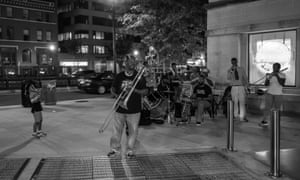
***
When my mother came to Washington DC in the early 1980s, she had three things on her mind: her new job at the World Bank, the one-year-old baby girl she gave birth to just before earning her PhD, and me as yet unborn but already demanding a larger living space than she and my father had originally intended for their temporary sojourn in America.
My mother found a three-bedroom apartment at 4600 Connecticut Avenue just a few blocks from the Van Ness metro station, and half a mile from the Wesley United Methodist Church where I was baptised, attended pre-school, and where we still attend Christmas Eve service when assembled as a family during the holidays.
For my mother, the decision to live in Northwest DC was practical. She didnt have a car and needed to be close to her demanding job; and she needed something affordable (which much of the city was at that time). When she interned at the World Bank as a young graduate student, her African and black colleagues advised her to avoid Virginia because, despite cheaper accommodation, its political and cultural history made it more hostile to minorities.
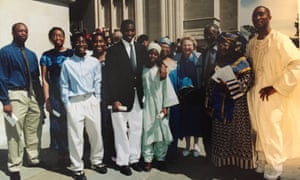
I almost took a place in Adams Morgan, but the apartment was too dark, my mother told me the last time I was home, as she drove me to Union Station to catch my train back to New York. Adams Morgan is now an overly trendy area to the north-east of Dupont Circle, but 30 years ago, it was more immigrant, more black and Hispanic: the kind of place your mother dragged you after church on Sunday so she could buy oxtail, crayfish and dried cod from the Latin American and African grocers selling the ingredients of the Nigerian food we regularly ate.
Later, after adding two more children, my family moved to Potomac, Maryland in large part because my father, a man who values his quiet and privacy, wanted enough space that he didnt have to see his neighbours unless absolutely necessary.
My mother built her career in downtown Washington DC at the World Bank headquarters, close to the White House. She worked with the international and domestic policy makers and practitioners who often move to Washington in waves as presidential administrations, congressional terms and ambassadorial appointments turn over.
Most of the kids I went to school with were white. They lived in neighbourhoods of white people, shopped in grocery stores with other white people, attended church or synagogue with other white people. For them, and in large part for me and my siblings, DC was wealthy and white even if this wealthy whiteness was hardly representative of the city. Perhaps Im unkind, but Id wager that many of my classmates were unaware, except for the odd cross-cultural or cross-class interaction, that the city they lived in actually looked more like me than them.
I knew this because my father worked in a Washington DC just a few miles from my mothers office, but worlds away culturally, economically and psychologically.
If my mother worked in official DC, then my father, when he finally moved over from the United Kingdom and began work at Providence Hospital in Northeast DC, built his career in unofficial Washington. Located on Varnum Street Northeast, Providence sat in a working-class black neighbourhood not far from the Shrine of the Immaculate Conception.
On the drive there, I would notice how the houses shrank in size and grew closer together. Some had fake green turf lining their front steps. There were fewer trees and the grass in the beds separating the curb and street was patchy and brown. The streets also had more cracks and potholes than in other areas of the city. Though it was perfectly safe and pleasant, it was evident, even to a childs eye, that this place received less attention than parts of Northwest DC.
When my father first started at Providence in 1993, his patients worked unglamorous jobs as teachers and support staff for government offices, as bus drivers, police officers and firemen. They carried with them stories of a vibrant and diverse majority subculture that, largely unbeknown to greater America and the world, built and shaped DC.
I remember working in Providences stuffy medical library, which occasionally would fill with black doctors and nurses taking a quick break away from the hectic wards. I also remember walking around and hearing an entirely different kind of English spoken: a slow, almost southern drawl that was instantly inviting and comforting. Washington DCs indigenous (for want of a better term) black folk were kind and open. They asked strangers, How is your day? and smiled, because that was good manners.
I liked it, my father told me when I asked what it was like to move from Manchester, England and Edinburgh, Scotland to black America. I was finally able to practise; to use my skills to take care of people and make money to support my family; and to work in a community that appreciates your work even more because you look like them.
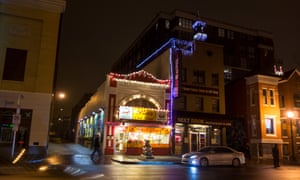
***
All that changed with the citys budget crisis of the mid-1990s. These were the nascent years of the extreme partisanship and Republican intransigence during the (hopefully) first Clinton presidency, that managed to shut down the federal government twice including right after the blizzard of 96 (which meant DC schools were closed for almost two weeks).
As usually happens during spats between the branches of the federal government, DC got tossed around in the middle, and ended up being stripped of its little sovereignty when President Clinton and the Republicans agreed to appoint a control board to oversee city finances.
As with many American urban centres that have seen financial hardship, this meant corporate executives making hardnosed decisions to cut services and save money. One of the casualties was DC General, the citys public hospital, which served lower-income communities across the district. After DC Generals closure, hospitals such as Providence saw an increase in patients from some of the citys more neglected areas, and it wasnt pretty. We saw a lot more gunshot wounds. We saw much more in terms of drug addiction and alcoholism, my father told me.
The worst was that hospitals in Northwest such as George Washington University Hospital where President Reagan was treated after John Hinckleys attempt to assassinate him, and where my youngest brother now works as a resident orthopaedic surgeon would illegally turn these patients away by telling them they could not treat their problems. How can you do that? Its not right! Its reprehensible, my father told me, his voice still brimming with anger many years later.
They could do it because of a dissonance at the core of Washington DCs existence. The people turned away didnt fit the whitewashed image of the marketable city, even though they were the majority of the population. It was the same reason my siblings and I were able to attend posh schools that could achieve a black student enrolment of 10% in a city more than 60% African American, and find those figures cause for celebration.
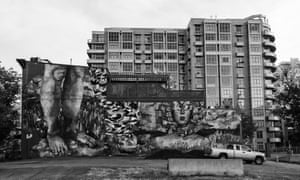
Two of my closest friends in school, Aaron and Ismael, were black (we comprised 33% of the black population of our high school class) and lived in what were then majority black areas. They were always aware of, but hardly surprised by, how different the city looked after a journey of a few miles.
I have to remind myself that its not required that your parents give you a car when you turn 16, Ismael said once, as we sat in the large, blue Volvo station wagon that my parents had bequeathed to my sister when she started driving, and that I inherited when I turned 16. I took comfort in the fact that, compared to some classmates who drove Audis, BMWs and Range Rovers, my Volvo was slumming it.
Ismael lived in the U street area of Northwest on Riggs Street, between 13th and 14th streets. Today the area is full of chic restaurants, multimillion-dollar row houses and condos and white yuppies (and their strollers). Twenty years ago, it was a predominantly black neighbourhood with more liquor stores than trendy restaurants, and more African immigrants from countries like Ethiopia than American immigrants from Idaho and Montana.
This is the neighbourhood where my father asked me to drop the car off with a Ghanaian man who owned a vacant lot full of problematic Mercedes Benzes and Volvos that he fixed for much less than the dealership a few miles away on Wisconsin Avenue. Young black children played in the streets because backyards were small. The pavements cracked over prying tree roots and there were some businesses with boarded windows; a testament to the 1968 riots that decimated a neighbourhood which had been an incubator for the black artistic renaissance of the early 20th century.
At the time, property values were much lower. Ismaels parents bought their row house in the 1980s for less than $100,000 (75,000). His mother was recently offered over a million in cash for that same property.
Whats changed? Quite simply, more and more sections of DC are beginning to look the way city has always thought it looked. I remember one visit to Ismaels neighbourhood where he pointed to a house at the end of the block with a rainbow flag flying from its porch. There are some gay guys living there now, he said.
This was the mid-1990s so being gay was still a big deal. It was also a harbinger of change; an almost textbook sign that gentrification was on its way. First wealthy but socially unacceptable white people who nobody wants to live next to find acceptance among black people who nobody has ever wanted to live next to. Then, years later, Im more likely to run into a white college classmate on the way back from grocery shopping tote bag slung over her shoulder, kale leaves peaking over the edge than I am to see one of Ismaels old neighbours who can speak to the rise and fall and rise of a community that has always been integral to the citys life.
As Ismael put it one afternoon a couple of years ago when he, Aaron and I sat at Hooters in Chinatown salivating over the chicken wings: When we were in high school, our white classmates used to come here with fake IDs to buy alcohol for their parties, and I didnt like that. Now they live here and they dont like that my mum does too.
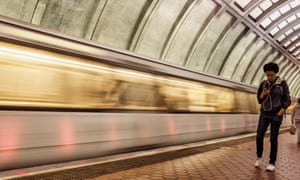
Gentrification is a tough topic to consider, especially given that my education, income and love for kale means I am demographically a gentrifier myself. For the gentrifiers and those in neighbourhoods being gentrified, there are contradictory emotions caused by the interplay of race, class and ambition in the winner-takes-all pursuit of constant growth that we have termed urban renewal.
Like many major cities built around a humming economic engine (LA has entertainment, New York has finance, my city has the ever-growing, ever-giving federal government), DC is an epicentre for urban renewal and thus a locus of intense debate and discomfort around how this change impacts the soul of the city.
DCs economic transformation began when Anthony Williams, the control board-backed chief financial officer of the city was elected mayor in 1999. In his two terms, Williams brought over $40bn of investment to the city. Coupled with an expanding federal government during the presidencies of George W Bush and Barack Obama, this led to an unprecedented increase in population, increased pressure on existing housing stock, and a demographic transformation that has seen Washingtons African American population decrease by 7.3% while the white population has increased by 17.8% over the last 15 years.
Washingtons new younger, often whiter money meets its older darker residents in a process that has accelerated under two subsequent mayors, and resulted in the conundrums facing places like the H Street Northeast corridor, where my friend and original New Yorker Mary lived during her time at Georgetown Law School and where an influx of students, hipsters and Hill staffers has brought new economic life, but also the possibility of cultural erasure, to another historically black subsection of the city.
***
One morning in late 2015 when visiting Mary to attend her law school graduation ceremony, plagued by jet lag, I slipped out of her house early to take a walk around her neighbourhood. As the sun rose, I steered clear of the new hipster pubs and draft beer houses on H Street, and instead followed side streets where aged row houses stooped towards the sidewalk.
I nodded to a dreadlocked man waxing a large SUV. I felt myself being watched, followed. From across the road, a man and a woman cat-called me. I pretended not to hear and continued my stroll, but they crossed the street to stand on the sidewalk in front of me.

The man was rail thin, and wore cut-off jean shorts with frayed hems and a blue form-fitting tank top that exposed his sinewy arms. He waved his skeletal fingers at me. His companion, a shorter, rounder woman with close-cropped platinum hair and a pot belly, stepped forward.
You new to the neighbourhood? the man asked.
Just visiting, I said.
Where from? the woman asked, stepping closer. I stood my ground. You thinking of coming here and buying one of our houses, arent you? she asked.
No, no, I said with a nervous laugh, Im from Nigeria thinking that distance would ease the tension.
But you want one of our houses, she insisted. People keep coming up in here buying our houses and shit, changing the neighbourhood and shit. Must be because we got that good stuff.
Then she reached forward and grabbed my crotch. You want that good stuff? Her companion squealed with delight as she cackled: You come with us. We can show you that good stuff.
Um. No, thank you, I said, and quickly stepped on to the grassy patch next to the sidewalk and hurried off. As I quickened my pace, I could hear them cackling to each other. The man in the tank top finger-waved good bye.
I was shocked, mostly by the unwanted sexual contact, but also by the realness of demographic and community change across the city. According to the architecture critic Robert Bevan: In part, we recognise our place in the world by an interaction with the built environment and remembering these experiences, and by being informed of the experiences of others: the creation of a social identity located in time and place.
So what happens when the built environment changes directly beneath your feet; when new money brings new structures, or the reconfiguration of old structures, that define a physical-mental-emotional space?
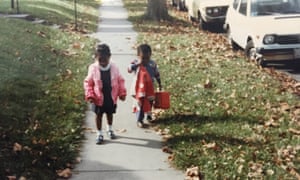
In DC, as people come for the good stuff in this case, the cheaper real estate of fringe communities the shared memory changes, and communities lose their distinct social identities, falling into the trap of market-defined millennial America. Suddenly, the face of a neighbourhood in real-estate brochures and tourism posters becomes an appropriately bearded 30-something white man or his smiling, blue-eyed girlfriend, their ethnically ambiguous interracial couple friends, and occasionally someone who looks like me. Meanwhile, the original resident is left wondering whether each potential new face represents the increased possibility that they will be excluded from their own story.
My friend Aaron who grew up in Northeast Washington DC with his mother and grandmother (and now lives in New York) told me: I dont know if I could really go back and live there. DC for me was close-knit, working-class residential communities. Its like the city wants something different for itself now. I dont know if Id fit in.
A lot of original Washingtonians I know (rich and poor) share this sentiment, even as there is a recognition that many of the changes have improved the overall perception and standard of living in the city. But there is also recognition that these changes have hardly been beneficial for everybody.
Before I retired, the people who lived around the hospital were all black. Now when I go around there, I notice the faces are different: they are all white and Hispanic and suddenly its become a more desirable place to live, my father said when I asked him what he thought about DCs transformation. I just wonder where everyone went. I just wonder why its only when white people move to a place that people suddenly pay attention.
As the citys demographic shift results in better services for once-black areas that now have increased white populations; as newcomers without concern for the citys rich history and implicit biases become more populous, and unconsciously use the citys security apparatus to neutralise difference that makes them uncomfortable; and as the citys police department itself becomes less black, less integrated with the communities it serves, and more aggressive, people lose faith that the city they once knew still wants to know them.
***
Like all things, cities must change even a city as enamoured of the past and memory as DC. But one hopes that, however seductive the pressures of new investment and economic growth, a fusion of social and economic identities, rather than erasure of one to accommodate the other, is allowed to form a new city soul which respects all of its histories.
Months before my friend Mary graduated from law school, she told me I had absolutely no choice but to present myself for her pre-graduation gala: an elaborate affair in which the almost-lawyers and their visibly relieved significant others, parents and sometimes children, dress up for a night of horror that can only be called adult prom.
The event, held at the National Portrait Gallery in the now-revitalised Chinatown, was close to where I had my horror of a high school prom at the Verizon Center just up the street. After a night of awkward conversation and observing awkward flailing that is future lawyers dancing, we left the event tipsy, holding each other for support.
Driven by an overwhelming feeling of nostalgia, I insisted we walk down towards the Capitol Building. We strolled slowly, occasionally turning to admire the Washington Monument and Lincoln Memorial shimmering in their floodlights behind us.
The street was empty, and the only sound came from our feet crunching the gravel paths as we walked. A soft drizzle fell, catching in the lights and obscuring the buildings so that everything suddenly felt otherworldly, unreal.
I love this city, Mary said, as I took her hand and we walked towards our waiting Uber. I love my city, I replied.
Uzodinma Iweala is the author of Beasts of No Nation. Order the book for 7.37 (RRP 8.99) at the https://www.theguardian.com/cities/2016/sep/12/gentrification-washington-dc-how-my-city-changed-colours